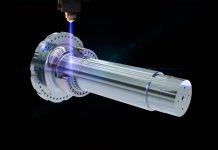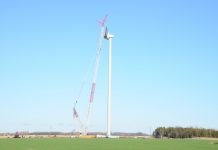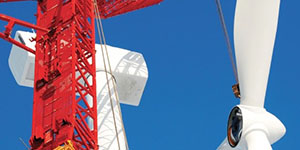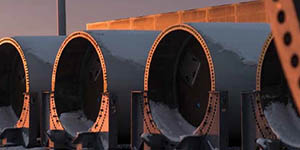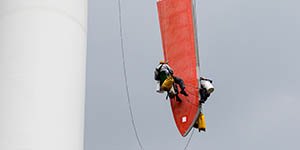You were recently named chief delivery officer at Power Factors, what are your duties going to be?
Power Factors has gone through incredible growth in the past few years, and we have achieved a leading position in both asset management and SCADA, EMS and PPC. As we look at our future growth projections and the investments we’re making, it is clear we need to be prepared to scale with our customers at an increasingly rigorous pace. That is essentially the core of my responsibilities.
I’m responsible for ensuring Power Factors customers realize the full value of our platforms, with a particular focus on our SCADA, EMS and PPC business, and that we deliver operational excellence.
My focus is on scaling our delivery model globally, building a high-performance organization, and continuously improving how we execute projects and how we support our customers globally in the space that we’re in.
How has your experience prepared you for this role?
I have spent my career at the intersection of technology and energy. I have 25 years in the energy industry, starting with a degree in electrical engineering. Since then, I’ve been focused on leading organizations that bring mission-critical digital platforms into complex environments. I’ve supported customers in multiple industries across the energy spectrum, including generation, transmission, and distribution portfolios.
My work has been primarily in big corporate organizations, overseeing very similar expansions and solving the scale issues that we’ve all experienced in this industry. These expansions have gone through multiple growth and reduction cycles – and that experience helped me prepare for what Power Factors needs to scale.
Another motivator for me to join the company was the opportunity to support the next phase of Power Factors’ growth. I’m proud to add to the great story that has been built, and to help the company prepare for the next steps as we expand and follow our customers in their own growth journeys.
What is the importance of SCADA and EMS in the wind-energy sector?
SCADA and EMS are foundational for operating wind assets. They provide the real-time insights that operators need to optimize performance, manage grid integration interactions, and, at the end of the day, ensure safety.
The real opportunity that we’re seeing in the market comes when you integrate these systems into a unified platform that enables smarter decisions across the entire renewables portfolio, which is exactly where Power Factors excels with its Unity platform.
The growth of battery storage (BESS) and hybrid sites raises the importance of SCADA and EMS too. BESS is an increasingly attractive proposition for investors looking into other ways of optimizing revenues and returns for their investments. We have seen curtailment of wind energy and, consequently, lost revenue become a growing problem for the global wind sector, underlining the need to have purpose-built, future-proofed SCADA and EMS that can integrate smartly to complement how operators manage assets.
Managing the real-time data from SCADA and EMS hardware is the key to improving operational performance. That’s the value proposition that we bring to the market and also why SCADA and EMS are so important to the wind energy sector: they allow renewable energy operators to make the most of opportunities and investments into collocated/hybrid battery storage and wind asset portfolios.
Why is there a need for IPPs to simplify their portfolios as they scale more rapidly?
As independent power producers (IPPs) grow, they naturally inherit a patchwork of systems and processes, data models, and vendors. If not managed correctly, this can lead into siloed knowledge and practice across different geographies and disconnected data integration across different assets.
To manage a utility-scale renewables portfolio effectively, having more visibility is crucial. Simplifying this patchwork into a single portfolio, using a unified platform, is critical to scaling without losing that visibility or control. The aim is to make the complexity more manageable, to standardize operations, and unlock portfolio-wide optimization.
What can be done to strengthen the power grid and make it more resilient?
I’ve spent the last 11 years managing SCADA, EMS, and real-time systems for transmission and distribution operators, and building grid resilience has been a key objective throughout.
It is a fact that there are bottlenecks in the grid. If we look from a global scale, the investment cycle in physical and digital grid assets are late – certainly behind the curve of renewable innovation. This directly affects our ability as an industry to connect new renewable assets into the grid. This is an issue we see across countries and regions, and it tends to push investors away. Ultimately, it impacts the stability of the market and the wider energy transition it supports.
Investment in technology is a must, but that is no longer the challenge. I see it more as a system issue. We need more coordinated policy and regulations alongside the investments in both the physical and digital layers of our power systems.
Germany is a good example. German policymakers are actively discussing ways to improve regulation to strengthen the power grid and make it more resilient. At the same time, they are looking at the storage projects in the interconnection queue.
Right now, investors are waiting in the queue without guidance or guarantee of project feasibility or priority. In a standard queue, everyone waits in line, based on when they applied for interconnection. But there has been so much progress in the past few years that many of the newer projects stuck at the bottom of the queue would have greater benefits to the grid, end customers, and society.
We need to find ways to prioritize the most impactful projects first. The current state is a clear example of the lack of policy not helping them move forward at the pace we need.
How are you going to approach these challenges?
As chief delivery officer, my goal and my focus are centered on three pillars: operational excellence; customer partnership and customer centricity; and scalable delivery.
IPPs expect companies like ours to operate at global scale and support them irrespective of geographies. I want to ensure every customer engagement strengthens our ability to deliver a constant, consistent value.
Equally, this is a fast-moving market that requires a fast reaction. This is a key focus for me as I approach these challenges: how are we scaling our business to support the growth of our customers? How can we support the consolidation of our customers’ existing assets?
Can you discuss Power Factors’ REM platform and how it may factor into plans to increase your customer confidence and compliance and profitability?
Unity, our integrated renewables energy management platform, unifies data from across technologies — wind, solar, storage — with functions, operations, performance, compliance, and commercial insight.
It’s a decision intelligence platform that blends hardware and software to enable better performance and reduce operational risk. With Unity, we empower renewable energy asset owners and operators to bring together all the data and workflows they need to operate renewable assets – from site-level performance analytics to portfolio-wide views, compliance and financial tracking.
Combining hardware and software, both on-site (at the plant level) and off-site (in the cloud), is essential for today’s renewable energy operators.
This view is closely linked to how we scale with IPPs as they grow and streamline what they’re looking for. The aim is to deliver peak performance and reliability across our customers’ portfolios, ultimately driving increased confidence, compliance, and profitability.
More info: www.powerfactors.com




